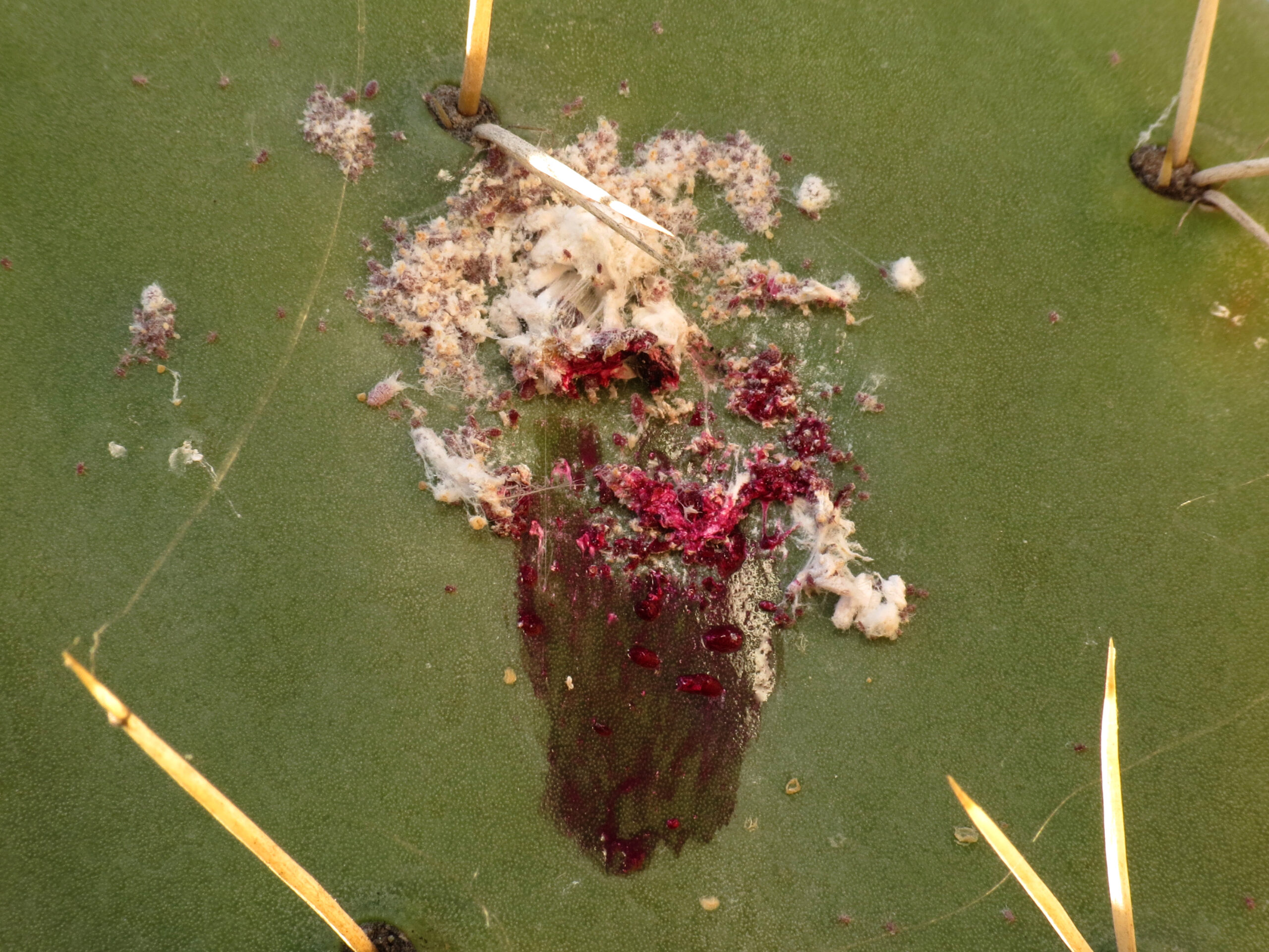Chances are high that you’ve encountered prickly pear cactus in Texas, and if so, you may have seen white, cottony, fluffy tufts attached to those paddles.
But did you know those little fluffy mounds are what gave the red stripes on the original U.S. flags their color? Or made the British red coats red?
That’s because those mounds are actually cochineal scale insects, which Texas A&M AgriLife Extension Service Specialist Wizzie Brown says leave behind a bright red color when smushed. She says it’s a color that results from the carminic acid the insect produces as a sort of defense mechanism.
“This is an insect that has a crazy history, because people have used that as a way to create bright red, beautiful dye,” Brown said.


















